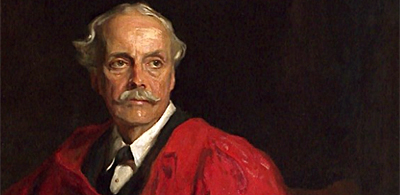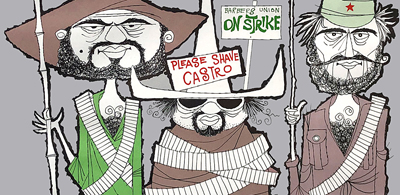Pro-Palestine Vandal Destroys Painting of Lord Balfour
On March 8, 2024, a woman from the UK group “Palestine Action” completely destroyed a painting created 110 years ago by the famed Anglo-Hungarian painter Philip Alexius de László (1869-1937). The group defines itself as a “direct action network dismantling British complicity with Israeli apartheid.”
The vandal attacked László’s 1914 oil painting Arthur James Balfour, housed at the Trinity College Library at the University of Cambridge, UK. The attacker used a spray paint can to directly spray bright red paint onto the unprotected canvas—obliterating the portrait. The perpetrator then used what I assume was a box cutter to repeatedly slash the classical painting… ruining it forever.
Vandal destroys De László’s painting of Lord Balfour. Video: Palestine Action.
Palestine Action took credit for the attack on their website, and released a video of the attack on their Twitter/X account. The group stated on its website the reasons for obliterating a historic painting:
“Palestine Action ruined a 1914 painting by Philip Alexius de László inside Trinity College, University of Cambridge of Lord Arthur James Balfour, the colonial administrator and signatory of the Balfour Declaration. An activist slashed the homage and sprayed the artwork with red paint, symbolizing the bloodshed of the Palestinian people since the Balfour Declaration was issued in 1917.
Arthur Balfour, then UK Foreign secretary, issued a declaration which promised to build ‘a national home for the Jewish people’ in Palestine, where the majority of the indigenous population were not Jewish. He gave away the Palestinians homeland, a land that wasn’t his to give away.”
In a March 8, 2024 Twitter statement, the group said:
“Normally our direct action campaign is focused on Israel’s weapons trade in Britain. However, it’s necessary to highlight Britain’s historic and current role in the colonization of Palestine which roots back to the Balfour declaration.”
Their “direct action” to end “the colonization of Palestine” is the complete destruction of a beautiful painting created by a brilliant artist. Who exactly deemed this operation “necessary,” aside from a tiny gaggle of pseudo-intellectual infantile leftists?
You can read the rest of the belligerent tripe on the group’s website and Twitter account, but you’ll have to find these on your own because I refuse to link to them.
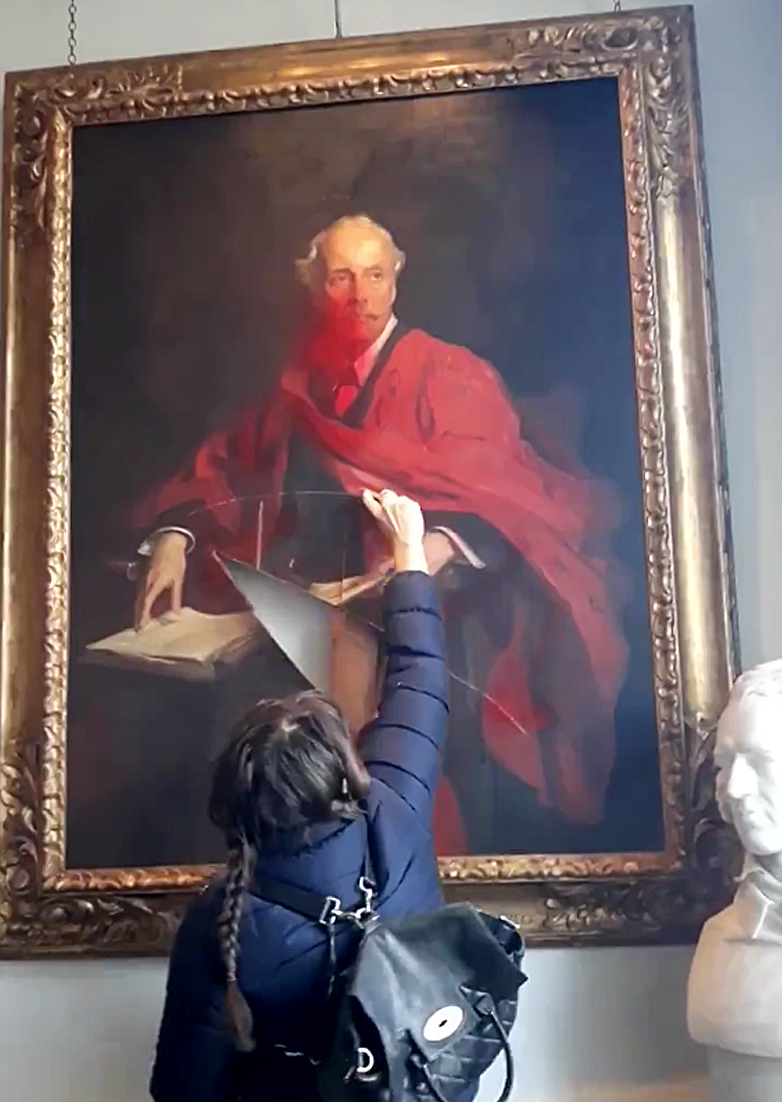
The current Deputy Prime Minister of the UK, Oliver Dowden of the Conservative Party said he was “appalled by the moronic act of wanton vandalism. Perpetrators should face the full force of the law.” Lord Walney, the government’s advisor on political violence and disruption, commented: “This is outrageous. We must not tolerate protestors thinking they can get away with senseless damage, they think the importance of the cause gives them the moral high ground to cause mayhem.”
A spokesperson for Trinity College told the press: “Trinity College regrets the damage caused to a portrait of Arthur James Balfour during public opening hours. The police have been informed. Support is available for any member of the College community affected.” Cambridgeshire Police said: “Officers are attending the scene to secure evidence and progress the investigation.” As of this writing the vandal has not been identified by name, and the police have made no arrests.
The subject of De László’s oil painting was Arthur James Balfour, 1st Earl of Balfour, otherwise known as Lord Balfour. He was a member of the UK’s Conservative Party, and served as Prime Minister of the UK from 1902 to 1905. He later served as Foreign Secretary in the coalition government of Prime Minister David Lloyd George, a Liberal Party member who ran a War Cabinet government during WWI.

Foreign Secretary Balfour wrote the Balfour Declaration in 1917, the document advanced the idea of establishing a “national home for the Jewish people” in lands then occupied by the Ottoman Empire. The Declaration was made public on Nov. 2, 1917, when Balfour sent a copy to Lionel Walter Rothschild, also known as Lord Rothschild, who was a prominent British politician, banker, and leader of the British Jewish community. In part the declaration read:
“His Majesty’s Government view with favour the establishment in Palestine of a national home for the Jewish people, and will use their best endeavours to facilitate the achievement of this object, it being clearly understood that nothing shall be done which may prejudice the civil and religious rights of existing non-Jewish communities in Palestine, or the rights and political status enjoyed by Jews in any other country.”
It should be noted the belligerents in WWI were the Allied Powers; France, UK, United States, Russia, Japan, and Italy, versus the Central Powers of Germany, Austria-Hungary, Bulgaria, and the Ottoman Empire. The Ottoman Turks occupied what is now Turkey, Jordan, Egypt, Palestine, Lebanon, Syria, some of Arabia, and much of the North African coast, not to mention Greece, Hungary, Bulgaria, Macedonia, and Romania.
At the end of WWI the Ottoman Empire collapsed. The Jewish people already lived in Palestine, but during this period Jews were also leaving Europe to settle in Palestine. In 1922 the League of Nations, the first intergovernmental organization and forerunner to the United Nations, gave Britain a mandate to govern Palestine.
The Balfour Declaration promised the territory would be open to Jewish settlement, paving the way for Israel’s founding in 1948. The Jews widely celebrate the creation of the state of Israel, while many Palestinians call it the “Nakba” (Catastrophe).
As for Israel being the Jewish homeland, just consider Solomon’s Temple, built in Jerusalem by Solomon, the ruler of the United Kingdom of Israel sometime between 10th-8th century BC.
The day before Palestine Action destroyed the Lord Balfour painting by Philip Alexius de László, the UK’s Commissioner for Countering Extremism Robin Simcox commented that London is turning into a no-go-zone for Jews as a result of mass pro-Palestinian protests.
In 1869 Philip Alexius de László was born in Budapest, Hungary, and studied art at an early age in the National Academy of Art. He also studied in Munich, Germany and Paris, France. In 1900 he married the Anglo-Irish amateur musician and socialite Lucy Madeleine Guinness of the Guinness family… yes the famous brewers of dark stout Guinness Beer!
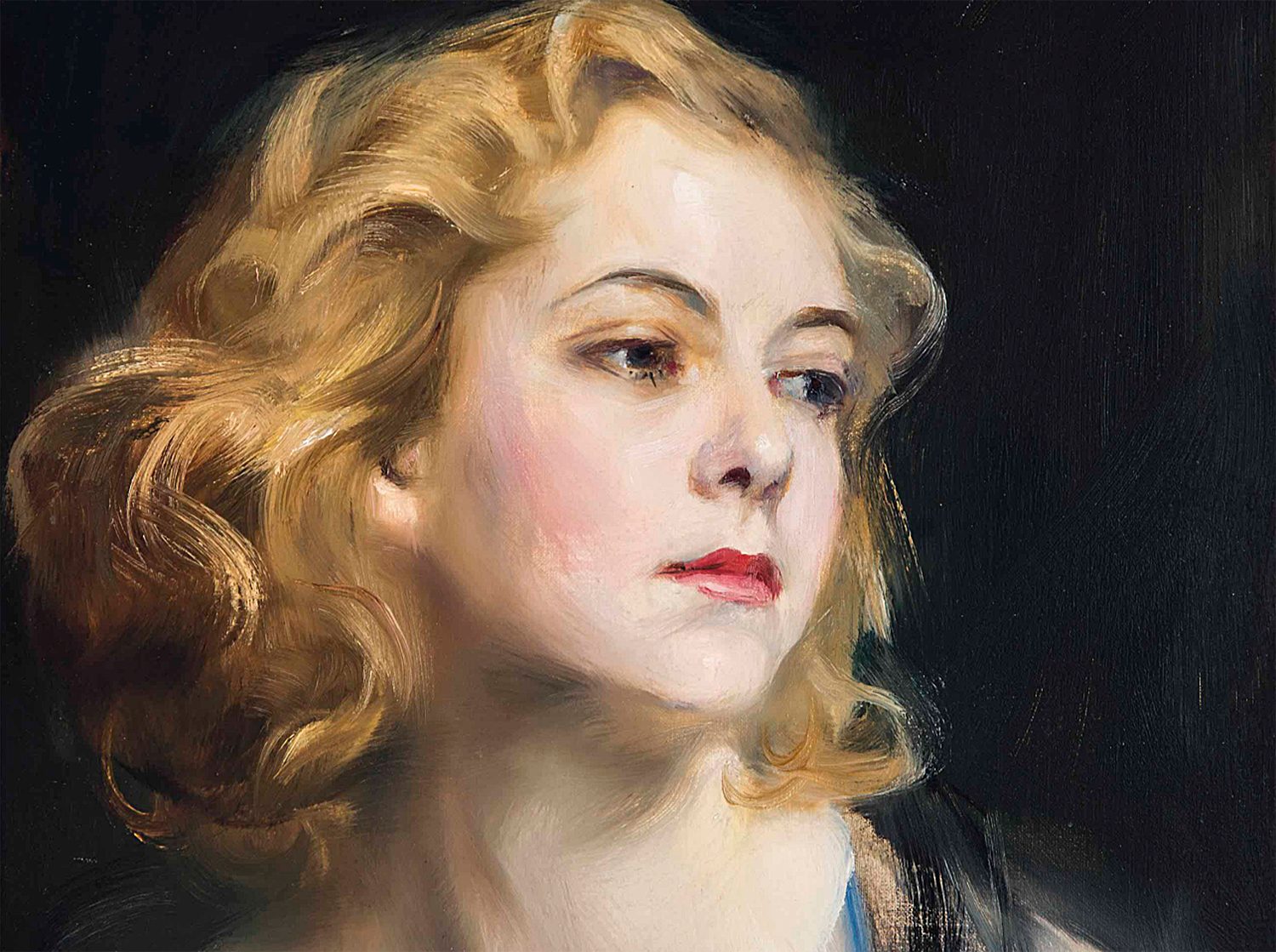
In 1907 De László moved to England, and became a citizen in 1914. He would become a proficient, masterful, and celebrated portrait painter in his day and beyond. But that means nothing to the numbskulls of Palestine Action.
Palestine Action likes to imagine itself as a revolutionary organization out to change society. But I can think of another world changing “revolutionary organization” that destroyed artworks—the National Socialist German Workers’ Party. The Nazis annihilated all types of artworks, music, sculpture, literature, and yes paintings. They banned or obliterated any artwork that didn’t conform to their demented ideals.
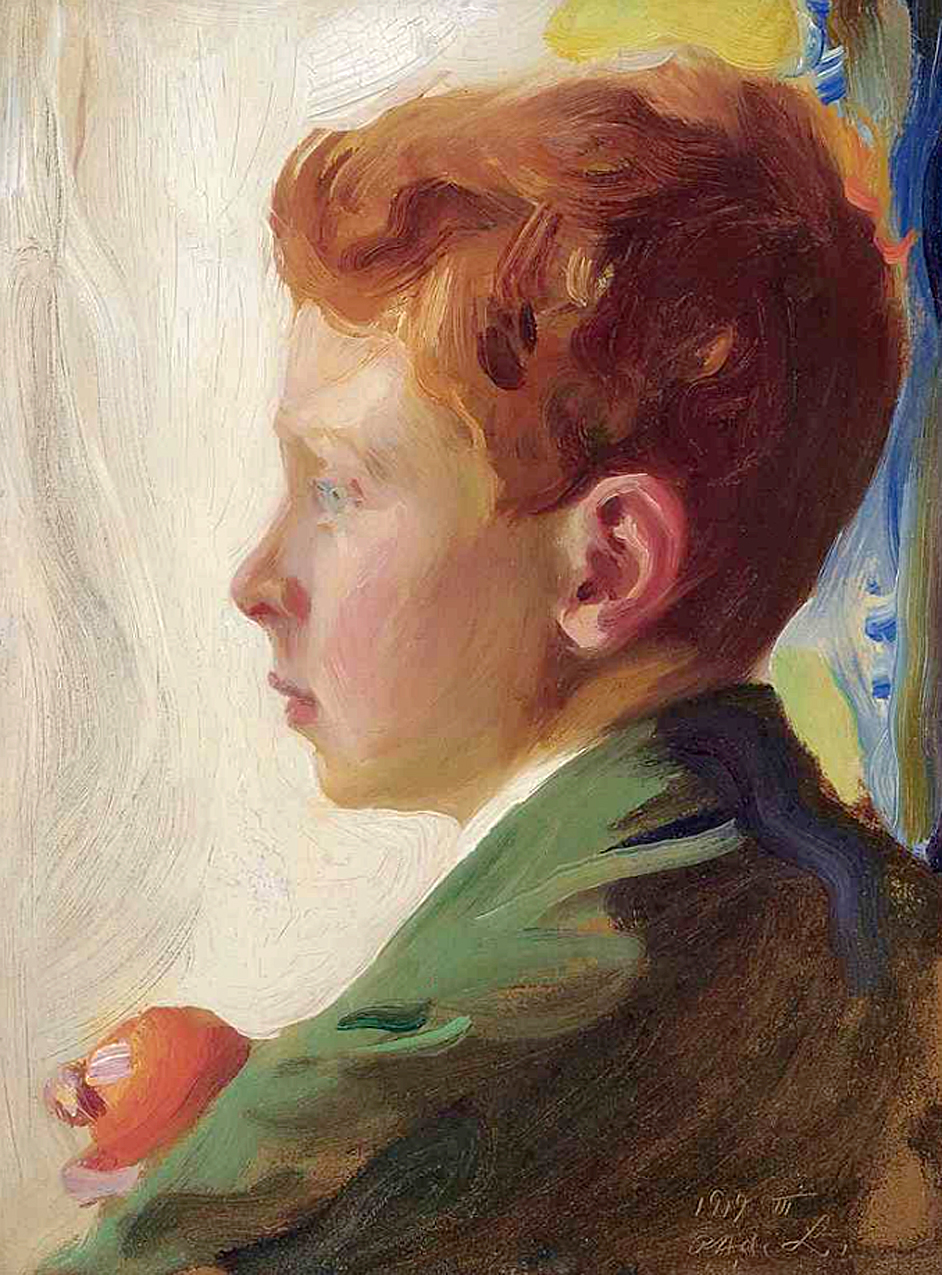
The destruction of De László’s oil painting by Palestine Action vandals, is a dangerous intensification of the war on art committed against artworks and art museums and carried out by so-called “environmentalists.” Palestine Action has pledged to continue and escalate their “direct action” attacks until a particular Israel arms supplier is shut down and driven from Britain. The radical group released the following statement:
“Elbit Systems, Israel’s largest arms supplier, who use captive Palestinians in Gaza as a human laboratory to develop their weapons, use Britain as a manufacturing outpost. The Israeli weapons maker build weaponry in factories across the country and work closely with the British government. Palestine Action vows to continue their direct campaign until Elbit is shut down and British complicity with the colonization of Palestine ends.”
Britain’s National Portrait Gallery alone has 140 portraits of Lord Balfour in its collection; drawings, paintings, and photographs. Undoubtedly they too would be ransacked by those who violently seek “a more just society.”
Thankfully most of these aesthetic artifacts are sequestered away in the National Portrait Gallery’s storage facilities, safe and sound from the hateful destroyers of art known as Palestine Action… for now.
____________
UPDATE: On Aug 6, 2024 six members of “Palestine Action” armed with sledgehammers used a prison van to smash into the Israeli defense company Elbit Systems in Filton, UK. They wanted to smash Elbit’s equipment but instead fought security guards and police officers who arrived after the break-in. One vandal swung his sledgehammer at Police Sargent Kate Evans, fracturing her lumbar spine. All six Palestine Action criminals were arrested and are in custody. The raid caused $1.28 million in damage. The attack took place BEFORE the UK parliament on July 2, 2025, placed Palestine Action on the UK government list of terrorist organizations.
On Nov 17, 2025 trial began for the six members of Palestine Action responsible for the violence at the Elbit Sytems plant. They face charges of aggravated burglary, criminal damage, and violent disorder. Samuel Corner (23), the man that used a sledgehammer to shatter the spine of Sargent Evans, has extra charges; grievous bodily harm with intent and two counts of battery causing bodily harm.
An April 2026 a trial is set for Palestine Action members or supporters arrested in the aftermath of the Elbit Systems raid. At first that group numbered 18, the arrestees now number 24.
UPDATE: On July 2, 2025, the UK parliament voted 385 to 26 to define and ban Palestine Action as a “terrorist organization.” The official banning places Palestine Action on a list of proscribed terrorist groups like Hamas, Al Qaeda, ISIS, and Hezbollah. The ban makes members and supporters guilty of a criminal offense punishable by 14 years in prison. Supporters who wear Palestine Action T-shirts or political buttons can be given six-month sentences.
The banning of Palestine Action finally came about after members of the group broke into the Brize Norton Royal Air Force base in Oxfordshire, England to damage military aircraft. They attacked two massive Airbus Voyager aircraft using fire extinguishers filled with red paint, shooting the paint into the turbine engines of the huge transport planes. Authorities say the criminal damage to the planes was over $8.8 million. Four Palestine Action members were arrested for damaging the planes.
Airbus Voyager aircraft can refuel jets planes in flight, or can be used to deploy massive amounts of equipment and up to 380 troops. The planes, capable of carrying 130 stretchers, can also be used in Medical Evacuation missions. Airbus Voyager planes are also used in NATO operations.
UPDATE: On March 13, 2025 the Cambridgeshire Police announced: “A thorough investigation was carried out but the investigation has now been filed pending any new information coming to light.” In other words, the police will take no further action regarding the destruction of László’s 1914 oil painting Arthur James Balfour.
Despite the miscreants taking full credit for their destroying the painting when declaring: “Palestine Action ruined a 1914 painting by Philip Alexius de László inside Trinity College, University of Cambridge,” and notwithstanding the fact that Palestine Action videotaped the entire destructive assault, it’s still “case closed.”
Trinity College said the damaged portrait is “undergoing restoration.”


